December 14, 2021, Shenzhen, China - OPPO 2021 Future Technology Conference (OPPO INNO DAY 2021) was officially opened in Shenzhen a few days ago. OPPO brought a number of heavyweight scientific and technological achievements and the latest brand trends. These include: OPPO's first self-developed NPU chip "Mariana® MariSilicon X", which has attracted much attention. The chip adopts 6nm advanced process and has four major technological breakthroughs. It is the first independent imaging-specific NPU chip on mobile terminals; OPPO's new generation of smart glasses OPPO Air Glass, which is designed to explore the XR world, is lightweight and equipped with practical functions; at the same time, OPPO also released a new brand proposition "Smile and move forward" during the conference.
"Mariana is the deepest trench in the world, representing the difficulty of developing our own chips," said Chen Mingyong, founder and CEO of OPPO. "MariSilicon X is just a small step for OPPO to develop its own chips. OPPO will continue to invest resources in the future and use a team of thousands of people to develop our own chips down to earth. No matter how many challenges we face, we will persevere and never give up."
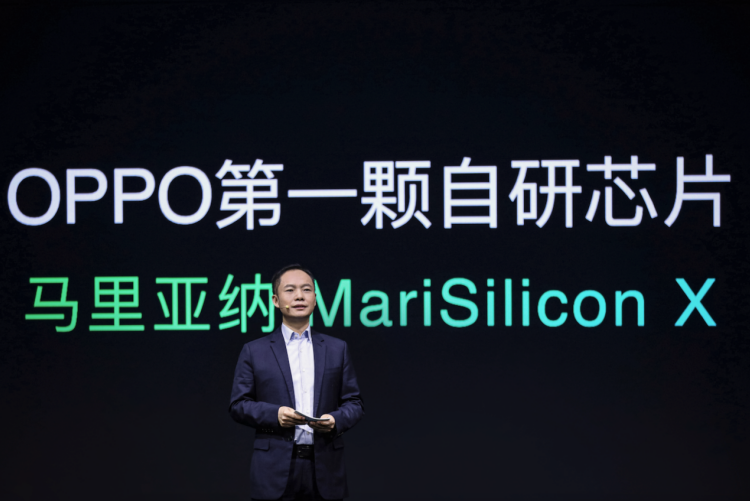
OPPO founder and CEO Chen Mingyong delivered a speech at the conference
MariaSilicon X: A key step in OPPO's breakthrough in underlying core technology
Chen Mingyong believes that technology companies must solve key problems through key technologies. Without underlying core technologies, there will be no future; and flagship products without underlying core technologies are castles in the air. Mariana MariSilicon X chip is an important research and development result of OPPO's "ten years of hard work", marking that OPPO has truly entered the "deep water zone" of research and development and has taken a key step in the breakthrough of underlying core technologies.
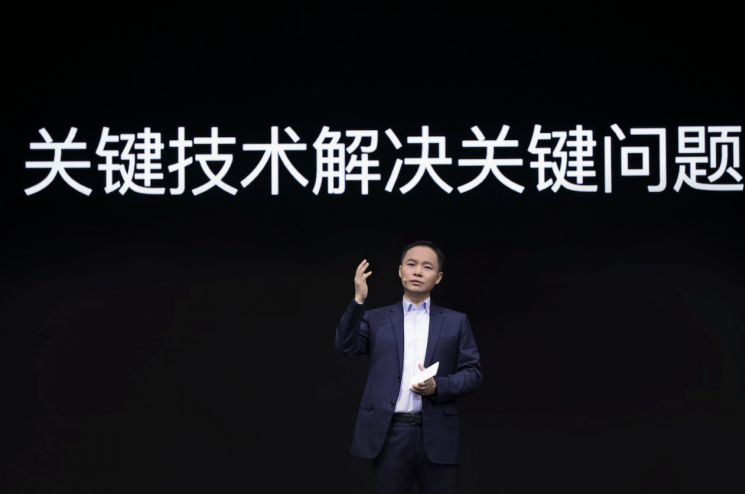
OPPO founder and CEO Chen Mingyong delivered a speech at the conference
As OPPO's first independently designed and developed imaging-specific NPU chip, Mariana MariSilicon X is the world's first independent mobile NPU using 6nm advanced process technology, with four major technological breakthroughs: unprecedentedly powerful AI computing energy efficiency, industry-leading Ultra HDR, lossless real-time RAW computing, and RGBW Pro that maximizes sensor capabilities. Especially in terms of AI computing energy efficiency, Mariana MariSilicon X adopts the new golden architecture concept for the future AI era - DSA (Domain Specific Architecture), realizing "special chip for special purpose", and its AI computing power can reach up to 18TOPS, while the power consumption is controlled to 11.6TOPS per watt, creating a milestone in the energy efficiency of mobile phone NPU. With the four major technological breakthroughs, Mariana MariSilicon X can fully serve OPPO's customized computing imaging needs in the future, helping OPPO truly realize the vertical integration capabilities in the imaging link.
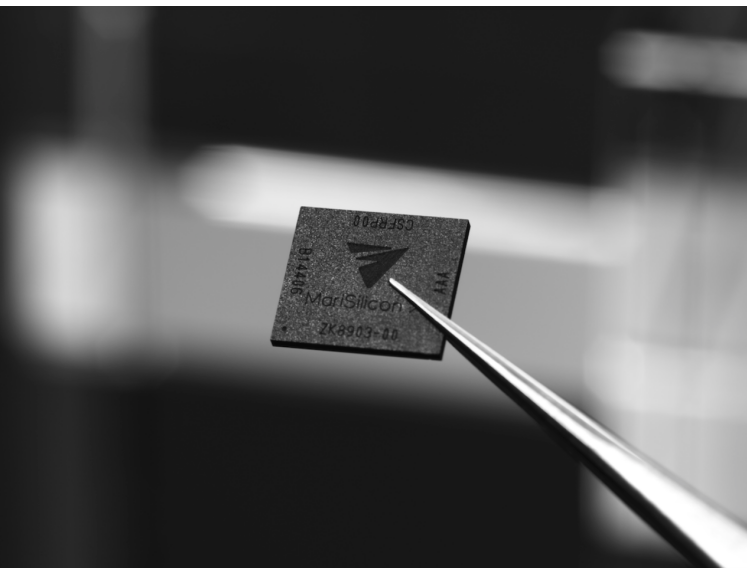
OPPO's first self-developed NPU chip MariaSilicon X
The release of MariaSilicon X will also open a new chapter for OPPO's imaging in the next decade. OPPO's high-end flagship Find X series will be the first to be equipped with this chip, and is expected to be launched in the first quarter of 2022, officially opening the dual-core era of flagship phones.
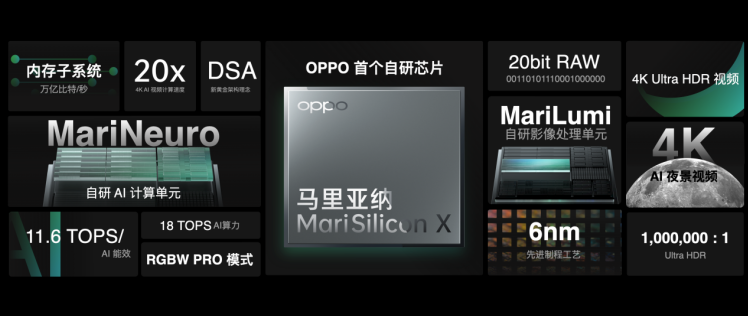
OPPO's new generation of smart glasses transforms smart glasses from toys to tools
Another breakthrough technology achievement at the conference, OPPO Air Glass, comes from the ubiquitous reality field, which represents the differentiated capability X in OPPO's "3+N+X" technology leap strategy. Prior to this, OPPO has launched two generations of AR products at the previous two Future Technology Conferences, accumulating rich R&D and product experience.
Liu Chang, director of OPPO Research Institute, said that for assisted reality products, information is the pain point that users most want to overcome, and the products must also be easy to use and practical.
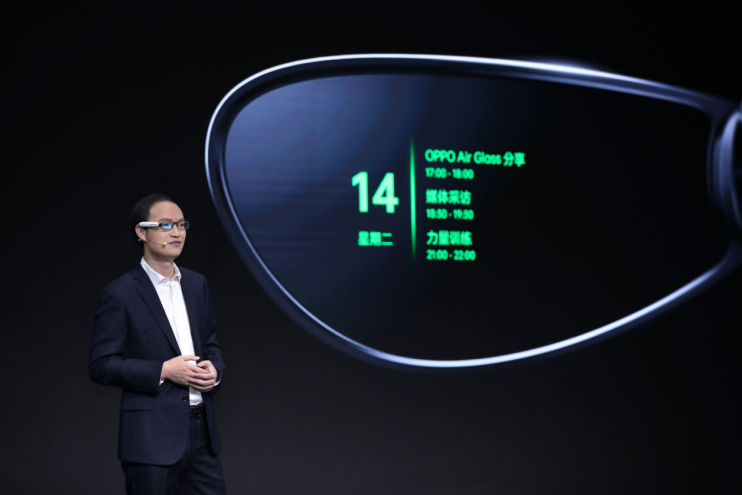
Liu Chang, director of OPPO Research Institute, released OPPO Air Glass
OPPO's new generation of smart glasses, OPPO Air Glass, weighs less than 30 grams and has a lens thickness of only 1.3 mm, making it one of the lightest smart glasses in the industry. OPPO has worked with the Human Factors and Ergonomics Key Laboratory of the China National Institute of Standardization to fully verify the visual comfort and safety of users in long-term wearing scenarios, ensuring that users can wear them for a long time without any burden.
OPPO Air Glass not only ensures the lightweight design features, but also takes into account practical functions. It can realize practical functions such as information reminders, real-time navigation, portable translation, and speech prompting. Through a series of innovations, OPPO Air Glass has effectively promoted smart glasses products into people's daily lives, allowing smart glasses to complete the transformation from toys to tools, thereby creating the "third screen" for future personal technology experience and further promoting the application of consumer-grade XR. The product will be available globally in the spring of 2022. By then, OPPO will also open all SDKs and join hands with more developers and industry partners to jointly promote the construction of the XR ecosystem.
New brand proposition: "Moving Forward with a Smile" OPPO and climbers promise the future
At this conference, OPPO officially upgraded its new brand proposition - moving forward with a smile. Chen Mingyong said at the conference that "moving forward with a smile" is derived from OPPO's values of duty, insisting on doing the right thing and the right path, and not being afraid of distance or difficulty.
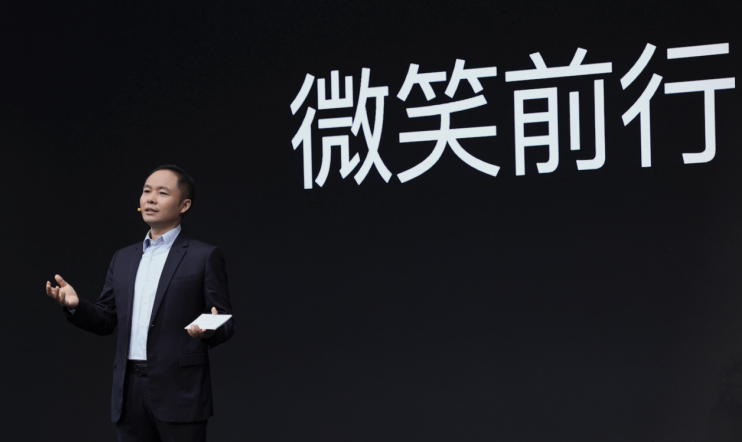
Chen Mingyong announced OPPO's new brand proposition "Moving Forward with a Smile"
Chen Mingyong said that there are many ordinary individuals in society who are striving to make progress. They are the climbers of this era. "Moving forward with a smile" represents the joint action of OPPO and all climbers. As a climber moving forward with a smile, OPPO hopes to promote the development of the industry and society through technological innovation in the future. Let every climber have a partner and strength on the road ahead. Even in the wind and rain, we can still look to the light and move forward with a smile.
In addition, as one of the important initiatives of the OPPO brand, the OnePlus brand also officially returned to the OPPO family in 2021. In the future, OnePlus, as a sub-brand of OPPO, will jointly provide users with a more complete and ultimate product experience.
Previous article:To increase the production capacity of analog LSI and transistors, ROHM Group invested in the construction of a Malaysian factory
Next article:Dutch giant ASML will launch a newer lithography machine that is more advanced than EUV
- Popular Resources
- Popular amplifiers
- Allegro MicroSystems Introduces Advanced Magnetic and Inductive Position Sensing Solutions at Electronica 2024
- Vietnam's chip packaging and testing business is growing, and supply-side fragmentation is splitting the market
- The US asked TSMC to restrict the export of high-end chips, and the Ministry of Commerce responded
- ASML predicts that its revenue in 2030 will exceed 457 billion yuan! Gross profit margin 56-60%
- ASML provides update on market opportunities at 2024 Investor Day
- It is reported that memory manufacturers are considering using flux-free bonding for HBM4 to further reduce the gap between layers
- Intel China officially releases 2023-2024 Corporate Social Responsibility Report
- Mouser Electronics and Analog Devices Launch New E-Book
- AMD launches second-generation Versal Premium series: FPGA industry's first to support CXL 3.1 and PCIe Gen 6
- LED chemical incompatibility test to see which chemicals LEDs can be used with
- Application of ARM9 hardware coprocessor on WinCE embedded motherboard
- What are the key points for selecting rotor flowmeter?
- LM317 high power charger circuit
- A brief analysis of Embest's application and development of embedded medical devices
- Single-phase RC protection circuit
- stm32 PVD programmable voltage monitor
- Introduction and measurement of edge trigger and level trigger of 51 single chip microcomputer
- Improved design of Linux system software shell protection technology
- What to do if the ABB robot protection device stops
- Allegro MicroSystems Introduces Advanced Magnetic and Inductive Position Sensing Solutions at Electronica 2024
- Car key in the left hand, liveness detection radar in the right hand, UWB is imperative for cars!
- After a decade of rapid development, domestic CIS has entered the market
- Aegis Dagger Battery + Thor EM-i Super Hybrid, Geely New Energy has thrown out two "king bombs"
- A brief discussion on functional safety - fault, error, and failure
- In the smart car 2.0 cycle, these core industry chains are facing major opportunities!
- The United States and Japan are developing new batteries. CATL faces challenges? How should China's new energy battery industry respond?
- Murata launches high-precision 6-axis inertial sensor for automobiles
- Ford patents pre-charge alarm to help save costs and respond to emergencies
- New real-time microcontroller system from Texas Instruments enables smarter processing in automotive and industrial applications
- Lithium battery charging and charging protection circuit
- Temperature transmitter hardware framework and schematic diagram
- Testing solutions for redundant link networks
- Key wireless technologies for 5G systems
- [NXP Rapid IoT Review] + Rapid IoT App Running Error
- What is the principle of touch switch?
- What is jitter and phase noise?
- [Shanghai Hangxin ACM32F070 development board + touch function evaluation board evaluation] + OLED screen display driver
- Tailing Micro B91 Development Kit Burning Pitfalls Record
- Interrupt vectors for ARM (Cortex-M3)

 LP2902M/NOPB
LP2902M/NOPB












 京公网安备 11010802033920号
京公网安备 11010802033920号